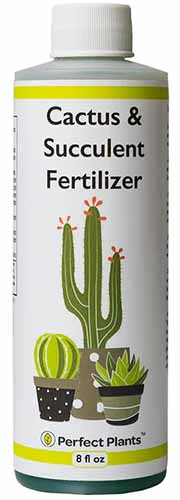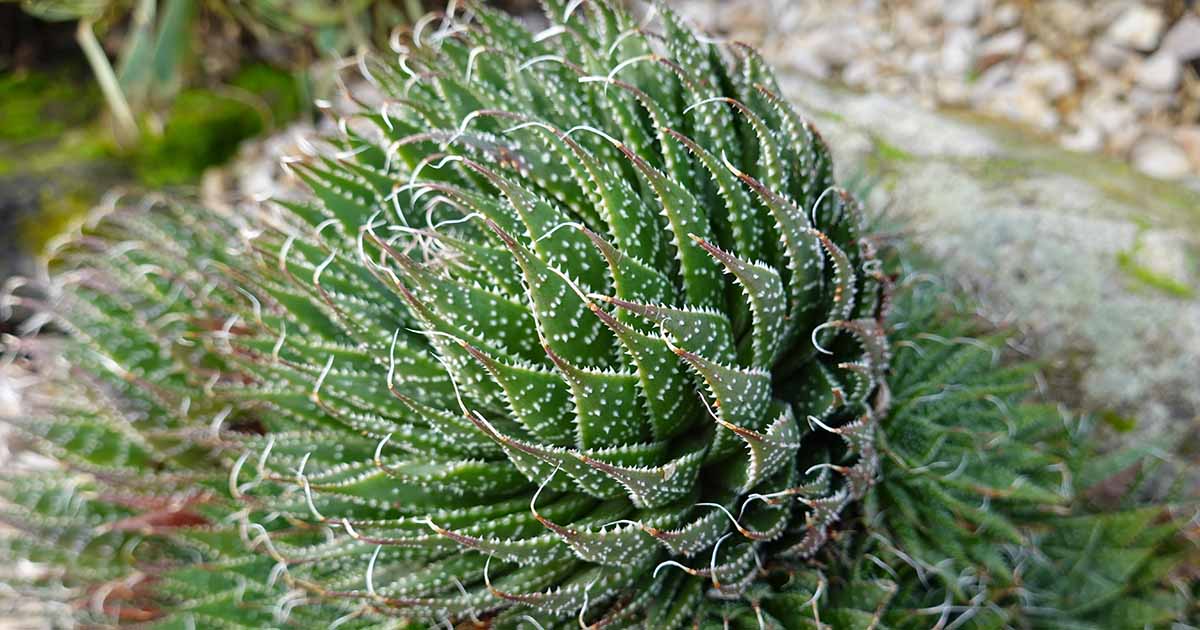
Aristaloe aristata
The cheese is not the only one that stands alone.
There’s also the lace aloe.
Once considered part of the Aloe genus, this succulent was reclassified into its own genus, Aristaloe, as the result of a 2014 molecular analysis that stirred up some haworthia classifications, too.
When I say its own genus, I mean its own, as in aristata is the only species in Aristaloe. And what a distinctive species it is!

We link to vendors to help you find relevant products. If you buy from one of our links, we may earn a commission.
Its gray-green, fleshy, triangular leaves are flecked with white tubercles on the tops and undersides.
It forms elegant rosettes that grow six to nine inches tall and eight inches wide, spreading up to two feet in clumps of eight to 10.
It takes its common name from the lacy bristles along its leaf margins and tips. They are soft and clean, and complement the pink-coral tubular flowers that bloom in summer to perfection.
Maybe its best trait is its drought resistance once established, which makes it ideal for xeriscaping.
Or is it the multitudes of pups the plants produce for easy propagation? Or the fragrant blooms that attract pollinators and hummingbirds?
While we have established that lace aloe is the top plant in its genus, we’ll have to determine its top attribute after I share more about its habits and growing requirements.
To be honest, we might disagree when the facts are known about all its attributes…
Here’s what I’ll cover:
What Is Lace Aloe?
While A. aristata is no longer considered a true aloe, this species and aloe vera are both part of the Asphodelaceae family.
Some call A. aristata guinea fowl plant, and I agree the markings on the leaves call to mind the patterns of those birds.
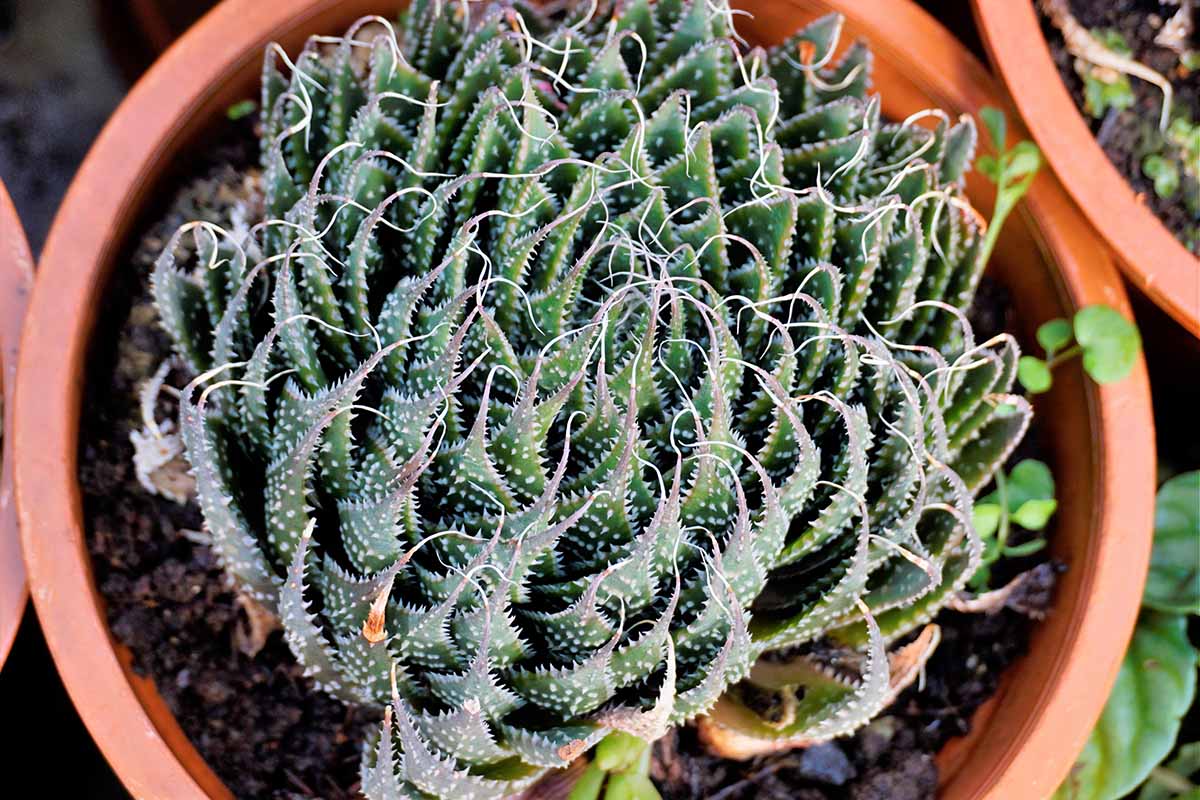
It’s also called a torch plant thanks to the coral-orange tuberous flowers that bloom in late spring and summer on 20-inch stalks.
They’re the only tall aspect, though. The rest of the plant is low growing, reaching nine inches max.
But it’s vigorous, and a single rosette may eventually spread a couple of feet and multiply to become a throng of eight to 10 rosettes.
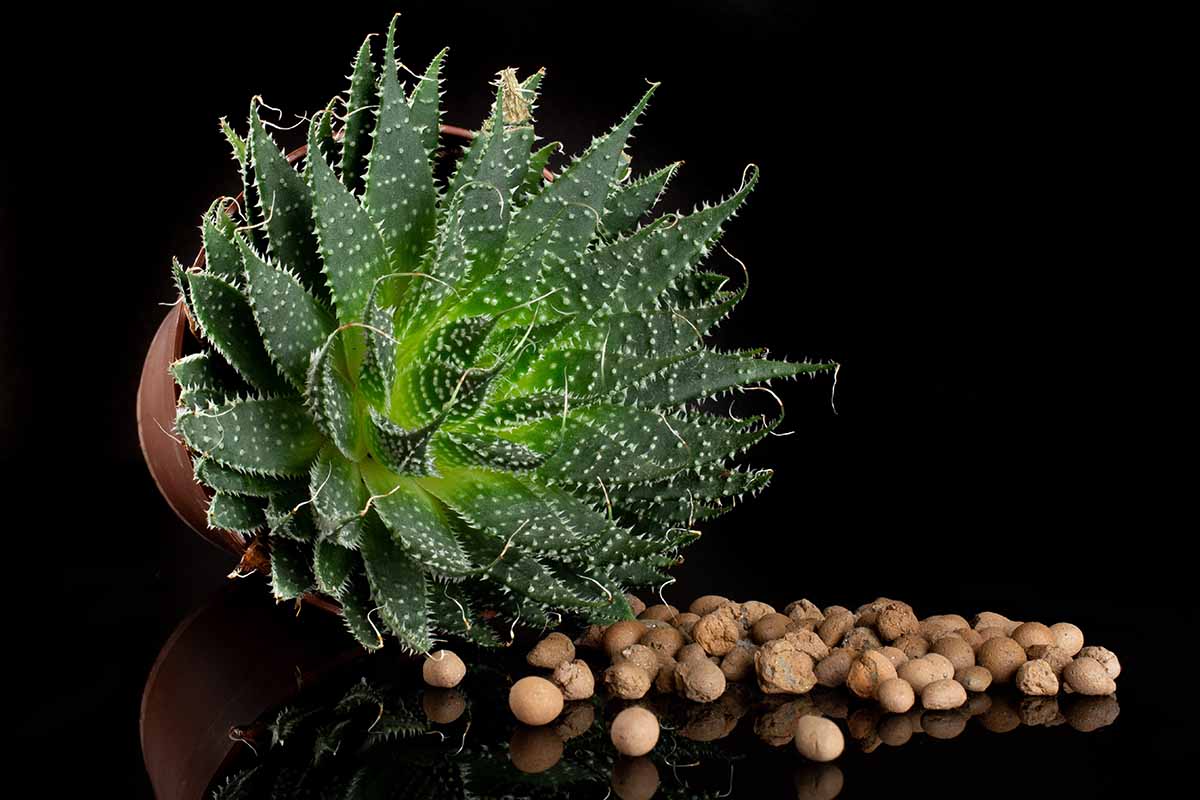
As well as being pretty, the plants can resist drought once established. They do okay even in poor soil, too, though they prefer sandy loam outdoors and occasional fertilizer when grown inside.
They are native to southern Africa and are found in the Eastern and Western Cape, and the Free State provinces of South Africa, and Lesotho.
Unlike the species still classified as true aloes, which tend to be hardy as perennials in Zones 9 to 11, A. aristata can be grown in rock gardens, beds, borders, and mass plantings in areas that get far colder.
There’s a bit of debate about whether they’re cold hardy in Zone 7, and I would advise you to proceed with caution and grow yours in containers to bring indoors during the winter if you live in that region.
But everyone agrees that this plant is hardy in Zones 8 to 10.
Would you like to see this unusual succulent growing in your landscape or on a windowsill? Keep reading, and you can make that happen.
Lace Aloe Propagation
Whether you’re intent on growing your first lace aloe or are trying for multiples from plants you already have, dividing pups produced by a parent plant is the simplest way to propagate.
This species is known for producing numerous offshoots, and our guide can tell you the best way to divide pups from the parent plant.
Spoiler alert: It’s easy.
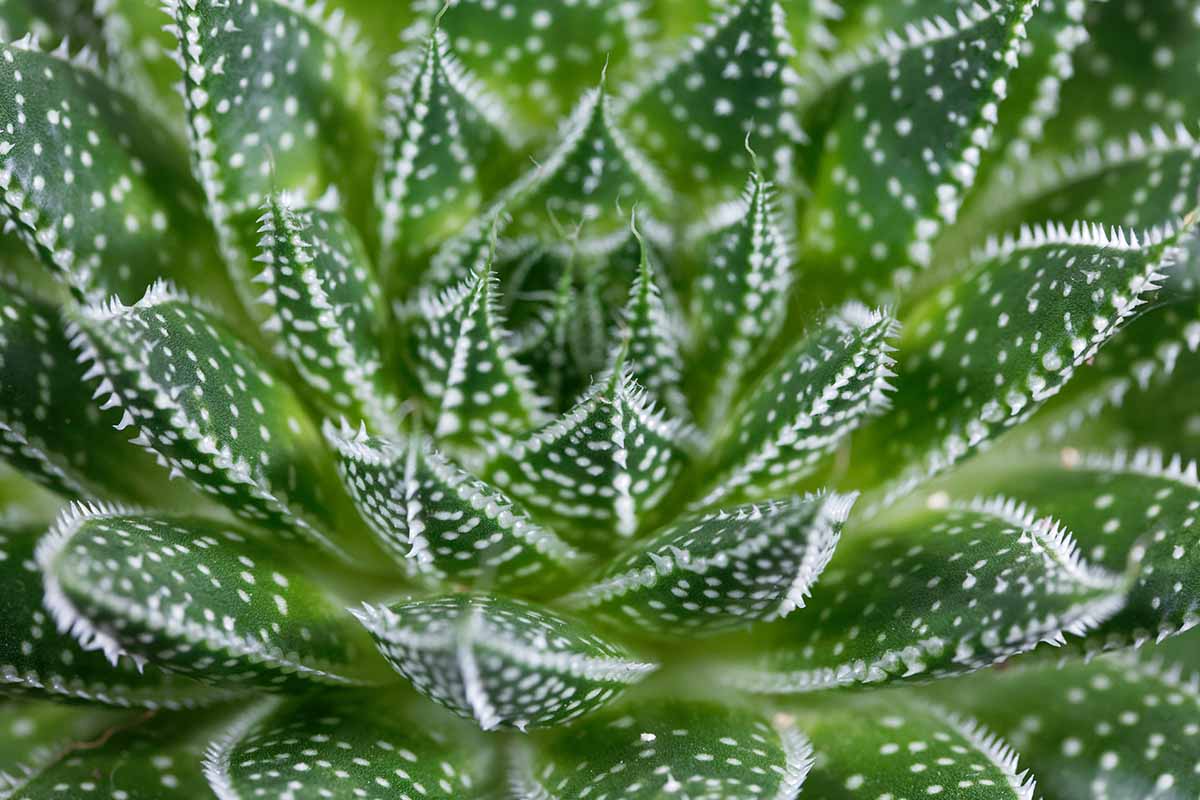
To root a cutting instead, use a sanitized knife to cut a leaf off at its base. Let it form a callus by setting the cutting in a cool, dry place for at least two hours or overnight.
Succulents like lace aloe won’t need rooting hormone. Just place the cuttings into seed-starting cells or a shallow tray of ordinary succulent or seed-starting mix, cut side down.
Keep the surface moist with a spray bottle of water until roots form.
It is technically possible to propagate A. aristata from seed outdoors in sandy loam or inside in a potting mix.
Should you happen to live in an area where this is a common xeriscaping plant, you might be able to find friends or neighbors who save the seeds and are willing to share.
You can find directions for sowing seeds in our guide to growing a similar succulent, tiger aloe.
How to Grow Lace Aloe Outdoors
Outdoors, grow lace aloe in sandy loam and direct sun to part shade.
These plants dearly love the morning sun if that’s available.
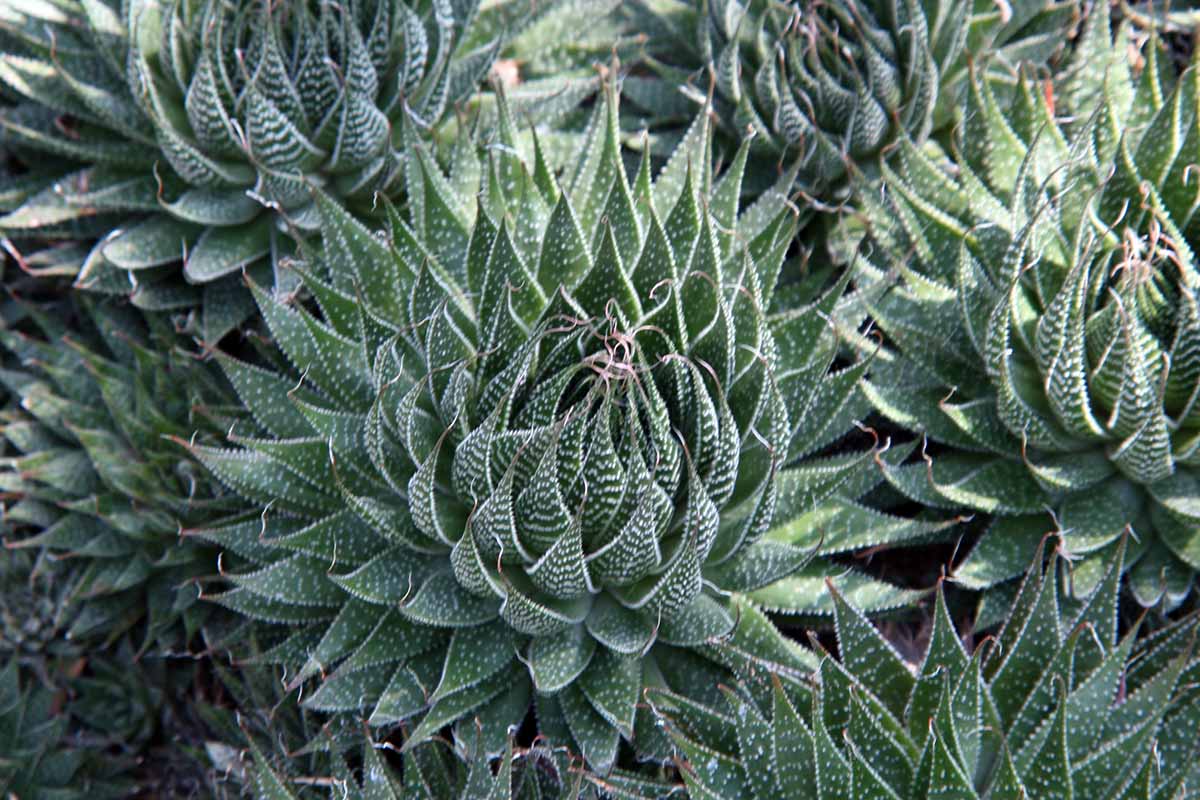
In the hotter USDA Zones where this succulent thrives, you may need to provide a part-shade location or toss some shade cloth on strategically in the heat of the day during the harshest summer weather.
While it’s not a member of the Aloe genus anymore, A. aristata still benefits from the same growing strategies as those other spiky, fleshy succulents.
See our guide to growing aloe outdoors for more step-by-step instructions.
Bear in mind, though, that A. aristata is hardy as far north as Zone 7, so much of the advice about avoiding freezes and overwintering the plants does not apply.
How to Grow Indoors
Indoors, plant lace aloe in pots that are porous and don’t retain water, such as unglazed terra cotta.
The pots should be just an inch or two wider than the rosette and they must have drainage holes.
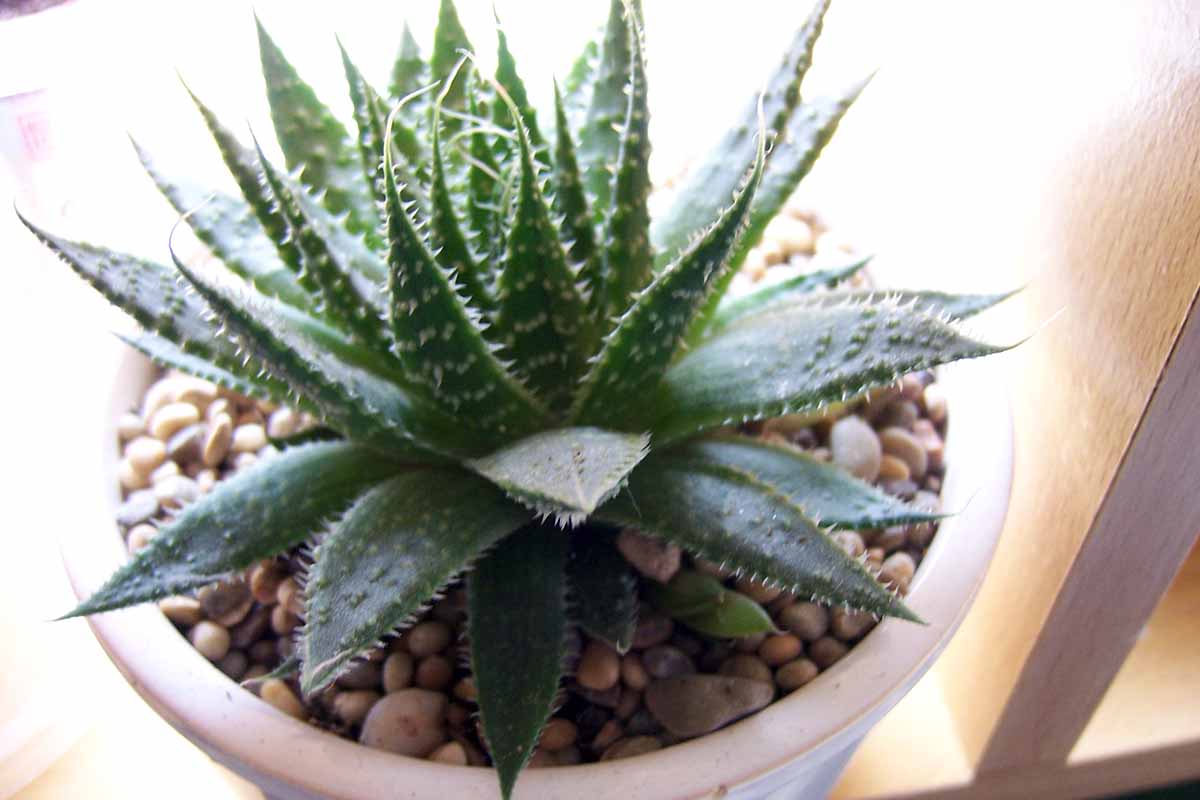
Use a potting mix specially formulated for succulents and cacti, and fill the pots to within about an inch of the rim.
If the soil is any higher, you risk all the water running off the top when you water before it reaches the plants.
Grown as a houseplant, A. aristata needs plenty of indirect light, and a few hours of direct morning sun are a bonus. It also requires water, but only once the top two inches of the potting mix are dry.
You can determine if indoor pots need water by poking your pinky into the edge of the pot or using a soil moisture meter.
Drench the soil at the surface and let it drain for at least 15 minutes, discarding the excess.
In winter, lace aloe isn’t actively growing and needs water only once every couple of weeks.
You can let the soil dry almost completely during the winter months, but it’s important to remember to water still, and drain thoroughly each time you hydrate.
Along with judicious watering, you may want to fertilize A. aristata once a month in spring and summer when it does most of its growing.
I prefer a concentrate you can dilute to about half the strength recommended on the label so you don’t overfertilize this succulent.
Cactus and Succulent Fertilizer
One good option is this eight-ounce bottle of liquid succulent fertilizer concentrate available from Perfect Plants Nursery.
Growing Tips
- Grow in sandy loam outdoors or succulent potting mix indoors.
- In hotter climates, provide a partial shade location or use shade cloth.
- To discourage root rot, never let the plants or pots sit in soggy soil or puddled water.
- Water deeply but only when the ground or potting mix is dry to at least 2 inches deep.
- Always let houseplants drain after watering and discard the excess.
Where to Buy
Note that there are haworthia varieties that resemble A. aristata. But if you want the genuine article, your best bet is to find a friend with pups available to propagate.
Two-inch pots of A. aristata are also available for purchase from Cactuslimon via Amazon.
Managing Pests and Disease
Even indoors, A. aristata tends to resist most pests and diseases.
It’s one of the few outdoor plants deer typically won’t eat, for example. (Though I won’t go so far as to say it’s completely deer resistant since those four-legged pests have been known to sample just about anything, particularly when they’re adolescents and food is scarce).
Those who grow lace aloe outdoors also report this succulent is unappealing to squirrels and voles.
The few insect pests it tends to attract are mealybugs or scale insects, which are both more common when you grow this succulent indoors.
Find tips for coping with scale or learn how to eradicate mealybugs in our guides.
The most common disease is also the most devastating: root rot. It’s caused by fungal pathogens that breed in overly soggy soil and eventually rot the roots, which kills the plant.
Avoid root rot by always planting A. aristata in well-draining soil, watering only when the top couple of inches are dry, and never letting it sit in a garden or saucer of pooled water.
You can find more tips in our guide to preventing and managing rot in succulents.
Best Uses of Lace Aloe
Between its relative cold tolerance and its pretty rosettes, A. aristata helps gardeners in Zones 7 to 10 add a desert vibe to the landscape.

Whether it’s blooming in summer or the leaves are dormant but evergreen in the winter months, lace aloe adds flair to desert gardens, rock gardens, and xeriscapes.
Indoors, it complements southwestern decor. Grow it with upright and trailing succulents for a trendy take on the thrill-spill-fill container garden concept.
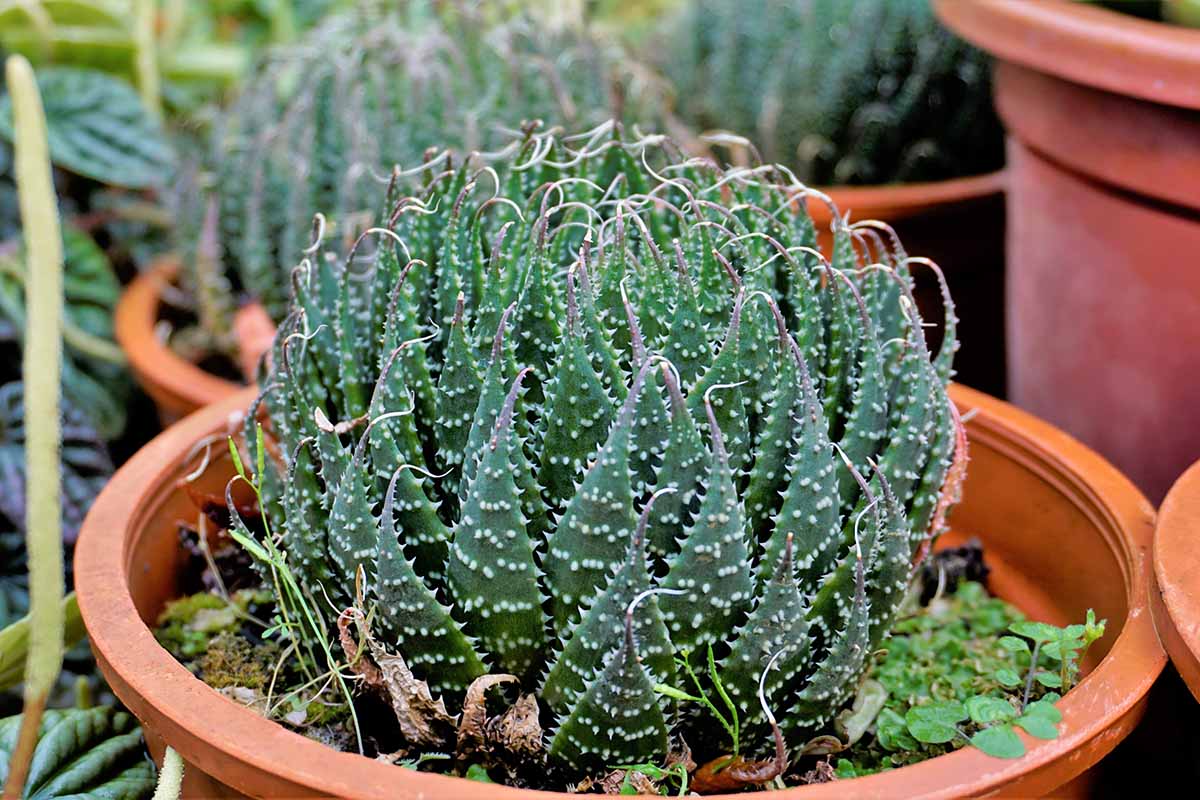
The attractive green-gray leaves with their white speckles also make this succulent a fine option for holiday decor.
The spots look a little like snow, and the colors work well alongside a colorful winter plant as long as their exposure and humidity needs are similar.
Quick Reference Growing Guide
| Plant Type: | Broadleaf evergreen succulent | Flower / Foliage Color: | Coral pink/gray-green with white flecks and margins |
| Native to: | Southern Africa | Water Needs: | Low |
| Hardiness (USDA Zone): | 7-10 | Maintenance | Low |
| Bloom Time: | Late spring, summer | Tolerance: | Deer, poor soil, some drought, squirrels, voles |
| Exposure: | Full sun to partial shade | Soil Type: | Sandy loam, or cactus and succulent potting mix |
| Spacing: | 1-2 feet | Soil pH: | 5.5-7.0 |
| Planting Depth: | 1/8 inch (seeds), crown above soil line (pups) | Soil Drainage: | Well-draining |
| Height: | 6-9 inches | Uses: | Desert gardens, dish gardens, houseplant, rock gardens, xeriscaping |
| Spread: | 1-2 feet | Family: | Asphodelaceae |
| Growth Rate: | Slow-moderate | Genus: | Aristaloe |
| Common Pests and Diseases: | Mealybugs, scale; root rot | Species: | Aristata |
Fancy Like Lace Aloe
Remember that famous line from poet Joyce Kilmer, “I think that I shall never see/A poem as lovely as a tree?”
It captures the way I feel about lace aloe.
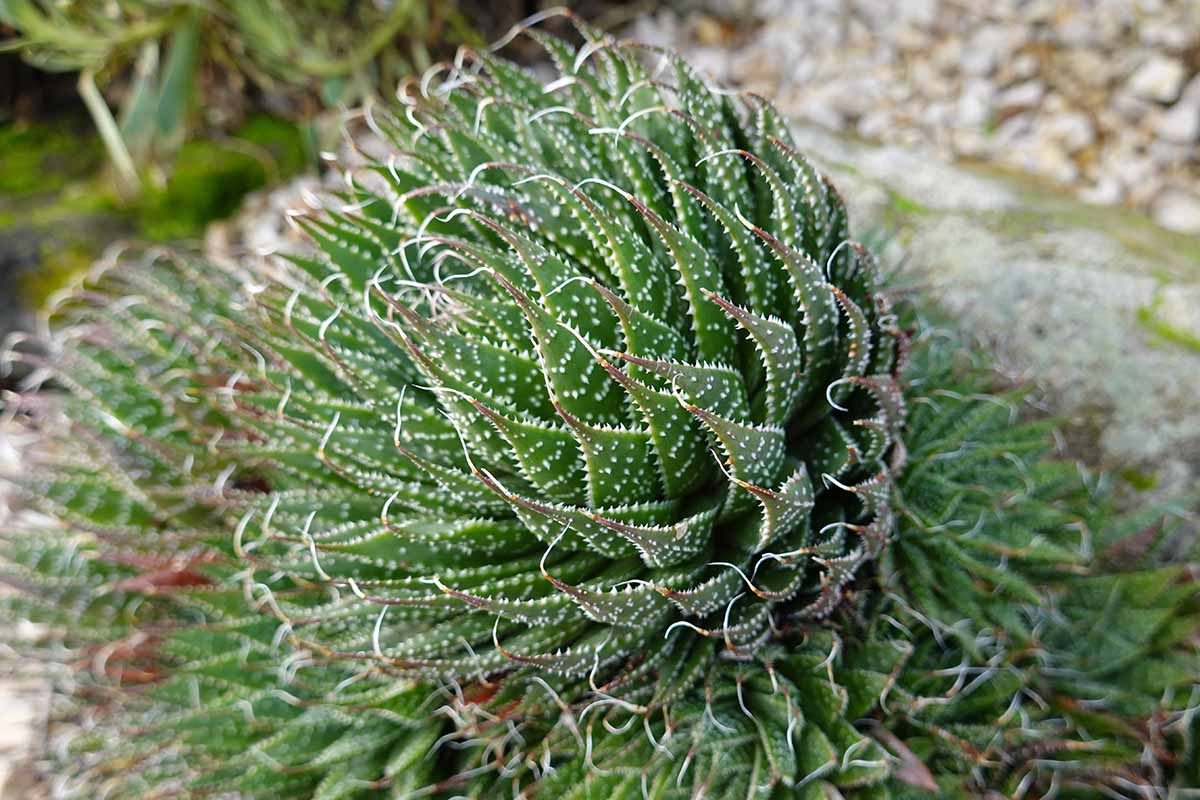
While this succulent is not as fancy or luxurious as lacy wedding dresses, Irish tablecloths, or even those caramelly French lace cookies, its natural beauty is as lovely as these artisanal creations and somehow even more fascinating.
Are you already familiar with this unique blooming plant? Our readers would love to hear about your growing experience in the comments below. That’s also where you can pose any lingering questions not covered in the guide above.
And if you’re starting to be intrigued by all things aloe, read these guides next for helpful tips and trending selections:
